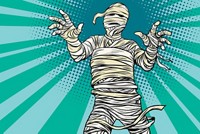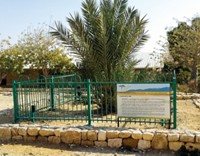Advertisement
Grab your lab coat. Let's get started
Welcome!
Welcome!
Create an account below to get 6 C&EN articles per month, receive newsletters and more - all free.
It seems this is your first time logging in online. Please enter the following information to continue.
As an ACS member you automatically get access to this site. All we need is few more details to create your reading experience.
Not you? Sign in with a different account.
Not you? Sign in with a different account.
ERROR 1
ERROR 1
ERROR 2
ERROR 2
ERROR 2
ERROR 2
ERROR 2
Password and Confirm password must match.
If you have an ACS member number, please enter it here so we can link this account to your membership. (optional)
ERROR 2
ACS values your privacy. By submitting your information, you are gaining access to C&EN and subscribing to our weekly newsletter. We use the information you provide to make your reading experience better, and we will never sell your data to third party members.
Education
A Date with Destiny, Chemistry in the Dark
by Bethany Halford
June 27, 2005
| A version of this story appeared in
Volume 83, Issue 26
The San Francisco Chronicle reports that scientists in Israel have managed to coax a small seedling to grow from a 2,000-year-old Judean date seed. It is the oldest seed ever known to produce a viable young tree, beating out a lotus plant grown from a 1,200-year-old seed in China.
The ancient date seeds were discovered 30 years ago during an archaeological excavation at King Herod's palace on Mount Masada, near the Dead Sea. Following the Roman conquest of Palestine, the Masada site was a last stand for a small band of Jewish rebels who spent years fighting off legions of Roman soldiers before committing mass suicide in A.D. 73. At that time, forests of Judean date palms flourished in the region, and presumably the Masada defenders snacked upon their fruits, which were legendary for their succulence and medicinal properties.
The seeds had been sitting in a drawer at Israel's Bar-Ilan University when Sarah Sallon, director of the Louis L. Borick Natural Medicine Research Center at Jerusalem's Hadassah Hospital, convinced the botanical archaeologists at Bar-Ilan to let her take three. Sallon handed them off to botanist Elaine Solowey, head of the sustainable agricultural department at Arava Institute for Environmental Studies at Kibbutz Ketura, in the southern Negev. Solowey has a reputation for nurturing rare and near-extinct plants.
"I thought the chances of this experiment succeeding were less than zero," Solowey told the Chronicle. She soaked the seeds in warm water to soften their coats and treated them with the growth hormone gibberellic acid to induce germination. Solowey then added a rooting hormone as well as an enzyme-rich fertilizer. She potted them on Jan. 25--the date of this year's Jewish festival of trees.
Five weeks later, a small date shoot had fought its way through the soil. The plant, which has been nicknamed Methuselah, is about a foot tall now. It has grown six leaves, one of which was snipped off and sent away for DNA analysis. Radiocarbon dating indicates that the seeds are 2,000 years old, give or take half a century. "I know that date seeds can stay alive for several decades. To find out that they can stay alive for millennia is astonishing," Solowey added.
"If it lives, it will be years before we eat any dates," Solowey told the New York Times. "And that's if it's female. There's a 50-50 chance. And if it's male, it will just be a curiosity."
We can only speculate that it was a sleepless night of congestion that prompted David Cummings of Cleveland, Tenn., to write to us about an observation he made while using Breathe Right nasal strips that he's puckishly named the "Cummings effect."
Breathe Right nasal strips are packaged similarly to Band Aids, except, Cummings notes, "these packages are opened more easily...two separate strips of paper are sealed together with a single Breathe Right strip between them." The pack, Cummings learned, utilizes a cold seal made of natural rubber latex. "One end of the package has flared tips," Cummings continues. "Simply pull the two flared ends, the packaging peels apart, and a strip falls out." So, what's the big deal, you may ask? Cummings answers: "Try this in the dark."
Cummings kindly sent the Newscripts gang a few packages of Breathe Right strips so that we could witness the Cummings effect for ourselves. Locked away in our darkened offices, we noticed that small bursts of light appeared within the packages as we pulled them apart.
"The Cummings effect is a cold-light luminescence," Cummings explains. "I have tried to come up with some innovative uses for the product and effect, with limited results. It could be used in that rare situation when the airplane must land and the runway lights are out. Thousands of people could line the runway and open packages to generate cold light to guide the plane."
This week's column was written by






Join the conversation
Contact the reporter
Submit a Letter to the Editor for publication
Engage with us on Twitter